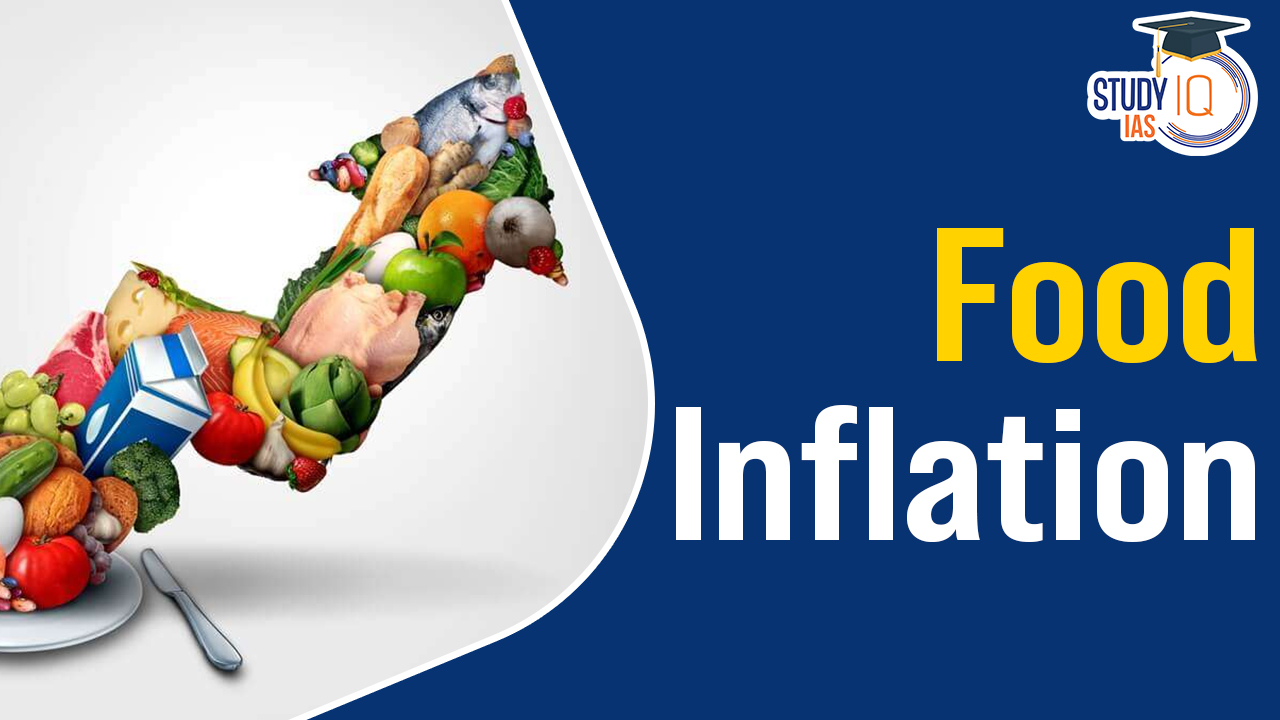Table of Contents
Context
- Food price inflation in India remains high (8.7% in February 2024) compared to overall inflation (5.1%).
- This poses a challenge for the RBI’s Monetary Policy Committee (MPC) to cut interest rates.
Food Inflation
Food inflation refers to the rise in prices of food items over a specific period, typically measured year-on-year. It’s a critical concern because food is a basic necessity, and significant price increases can strain household budgets and impact people’s access to adequate nutrition. Food inflation disproportionately affects low-income households who spend a larger portion of their income on food.
Drivers for Potential Softening of Food Inflation
International Prices
- The United Nations Food and Agriculture Organization’s food price index averaged 118.3 points in March 2024, a 7.7% drop from the previous year and 26.2% lower than the peak in March 2022.
- The index fell for seven months straight from July 2023 to February 2024 but increased in March, primarily due to a jump in the index for vegetable oils.
- Global food prices have eased, attributed to bumper harvests and restored supply lines post-COVID and Ukraine war disruptions.
- This makes imports more feasible (e.g., wheat with a landed cost potentially lower than MSP).
Possible La Niña
- The weakening of El Niño and the potential development of La Niña could bring surplus rainfall in India, improving agricultural output and helping mitigate food inflation pressures.
Current Situation of Food Inflation in India
- Indian wheat stocks were at a 16-year low, with expected reductions in crop size due to delayed winter onset affecting vegetative growth.
- Despite lower production in some states, overall wheat production may not be severely impacted.
- Import prices of Russian and European wheat have decreased, making imports a feasible option for India.
- India’s pulses imports surged due to El Niño, affecting rainfall and consequently, major pulses-growing states. This led to increased imports to keep prices under control.
Economic and Agricultural Implications
- Easing global food prices and the possibility of favourable monsoon conditions due to La Niña present an optimistic outlook for India’s agriculture sector and food inflation scenario.
- Decisions on wheat imports and adjustments to customs duties are pending, likely influenced by election outcomes and the global agricultural market situation.
- The transition from El Niño to a neutral or La Niña phase could significantly impact India’s agricultural productivity and economic policies regarding food imports and inflation management.


 World Day for International Justice 2025...
World Day for International Justice 2025...
 Anusandhan National Research Foundation ...
Anusandhan National Research Foundation ...
 Places in News for UPSC 2025 for Prelims...
Places in News for UPSC 2025 for Prelims...





















